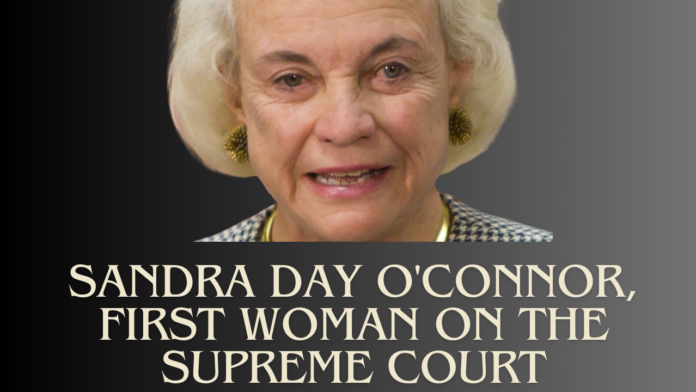Based to the Supreme Court’s statement, Sandra Day O’Connor, the first female justice, passed away in Phoenix, Arizona, on Friday. Her causes of death included respiratory illnesses, dementia, and multiple myeloma. She was ninety-three.
President Reagan selected Sandra Day O’Connor to the Supreme Court in 1981; she worked on the court for over twenty-four years before retiring in 2006.
More About Sandra Day O’Connor
Since there, Sandra Day O’Connor worked on major cases and turned popular in the legal community. She was known for making powerful, uncompromising views on a variety of subjects, including campaign finance reform, state sovereignty, abortion rights, national security, and affirmative action. Her major contribution to the case Bush v. Gore election case in 2000 signaled a choice that was later criticized and regretted.
Because of her central position and significant role in addressing numerous important issues, O’Connor was frequently referred to as the “most powerful woman in America” while serving on the court. Her retirement led to the nomination of Samuel Alito, a more conservative justice, by President George W. Bush, shifting the court’s direction towards a more conservative stance.
With his retirement, O’Connor’s lengthy and well-rounded career in both family law and law administration came to an end. In 2005, her husband was battling Alzheimer’s disease, and when Chief Justice William Rehnquist informed her that he would step down due to health reasons, Sandra Day O’Connor decided that she could not wait and face the potential risk of two vacancies on the court simultaneously.


Although she stepped down, fate took a different turn. O’Connor announced her retirement and, within a few weeks, the Chief Justices passed away. As confirmation hearings began, she remained for another six months. In the face of inevitable and cruel circumstances, she had to put her husband’s well-being first and ultimately witnessed his passing.
The confirmation process started, and she stayed on for an additional six months, witnessing the cruel decline of her husband’s health. When he became so severely affected that she had to keep him at home, and subsequently, he passed away.
Journey
O’Connor was born on March 26, 1930. She was the oldest of Harry and Ada Mae Day’s three children, brought up in Lazy B Ranch where she had to deal with a challenging and lonely childhood. For school, she was sent to El Paso, Texas, where she lived with her grandparents. At the age of 16, she earned her bachelor’s degree from high school, went to Stanford University, and started law school at the age of 19, one of only five women in her class.
Though she graduated at the top of her class, O’Connor faced rejection from most law firms. An offer came from a law firm in Los Angeles to work as a legal secretary, but she declined and eventually found a job in the San Mateo County, California, district attorney’s office.
Later, she and her husband John, whom she met in law school, settled in Phoenix. While actively involved in state politics, she raised their three sons. In 1969, she was appointed to fill the remaining term of a state senator, and then she successfully ran for the seat in 1970.
In 1973, O’Connor became the majority leader of the Arizona Senate, becoming the first woman to hold such a position in any state senate in the U.S. In 1974, she was appointed to the State Court of Appeals, and in 1979, she was nominated to the state Supreme Court.
In 1979, through mutual friends, O’Connor met U.S. Supreme Court Justice Warren Burger. He made sure she received invitations to national legal conferences because he was impressed. In 1980, President Reagan, committed to appointing a woman to the Supreme Court, nominated O’Connor after the retirement of Justice Potter Stewart.
After a unanimous confirmation, she was sworn in on September 25, 1981. In her confirmation, Sandra Day O’Connor emphasized not that she would decide cases as a woman, but that she was a woman who would have the opportunity to decide cases.
After surviving a mastectomy in 1988, she promoted for breast cancer awareness and highlighted the value of Alzheimer’s disease research because her spouse had the condition. Sandra Day O’Connor retired in January 2006 to care for her ailing husband until his death in 2009.
right after her retirement from the bench, O’Connor dedicated her time to improving civic education. She created iCivics, a company which offers free internet resources to middle and high school students. The highest civilian award presented by a president, the Presidential Medal of Freedom, was given to her in 2009 by the late President Barack Obama.
That, then, is the incredible journey of Sandra Day O’Connor, a trailblazer who changed the course of history and forever changed American civic and legal life.


